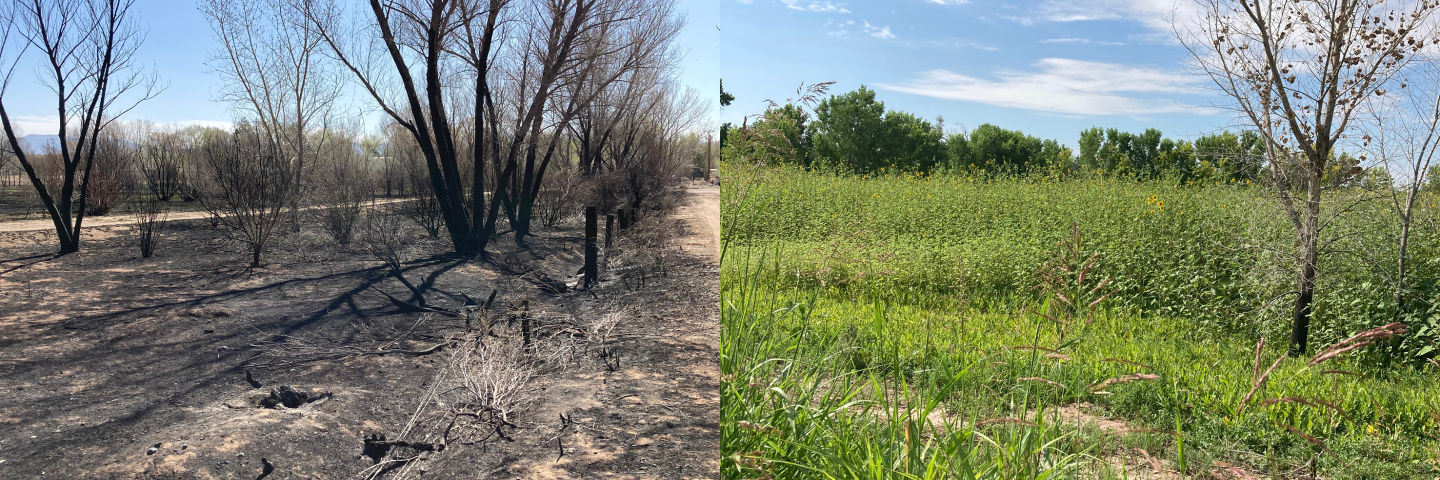USDA-NRCS and Audubon Southwest Collaborate on a Conservation Innovation Grants (CIG) project in New Mexico

Through the Conservation Innovation Grants (CIG) program, the Natural Resources Conservation Service (NRCS) will provide funding for 50% of the eligible expenses, up to $50,000, to refine and demonstrate the use of multispectral imagery collected with drones to plan and monitor restoration projects.
Albuquerque, N.M., February 8, 2023 – It’s a bird, it’s a plane, no it’s an unmanned aerial system (UAS) using multispectral imagery! We are all familiar with drones by now and know that they are being used regularly for many professional and recreational uses. Drones are aerial vehicles that are controlled remotely. UAS is a drone with cameras, GPS, and software that allows data to be collected and analyzed. Through the Conservation Innovation Grants (CIG) program, the Natural Resources Conservation Service (NRCS) will provide funding for 50% of the eligible expenses, up to $50,000, to refine and demonstrate the use of multispectral imagery collected with drones to plan and monitor restoration projects.
Collecting data on the ground, such as with transects and plant surveys, is challenging due to the time and labor commitments required to collect accurate and relevant data. Satellite imagery, such as LANDSAT images, is useful for visualizing changes over the long term, but cannot assess changes over a single season and does not have the image resolution required for plant identification. Aerial images collected via drone technology can help address these issues. Drones can be used to monitor projects of any size with minimal time in the field. Drones with multispectral imaging capabilities are increasingly being used for agricultural and habitat restoration purposes, as well as for monitoring prescribed fires and wildfire impacts. Multispectral images contain four color bands (infrared, red, green, and blue) and can be used to assess plant health, plant types, soil moisture, and other metrics that cannot be captured using a standard camera.
Audubon Southwest is leading this pilot project and will collect multispectral aerial imagery focusing on the Middle Rio Grande while complying with all federal rules and regulations regarding drone use. Through CIG, the project will result in 1) a guide for collecting and analyzing multispectral drone imagery on project sites, 2) a determination of when multi-spectral imagery is needed and when 3-band imagery will suffice, and 3) a set of best management practices for using multispectral imagery for different types of habitat projects such as field fallowing, habitat restoration, and conservation easement monitoring.
About the Program
Since the 2002 Farm Bill, Conservation Innovation Grants have promoted the development and adoption of innovative conservation approaches and technologies in conjunction with agricultural production. CIG partners use creative problem-solving, science, and the latest technologies to address environmental issues that work for agricultural producers. CIG funding is directed to national and state priorities. For more information, please visit the Conservation Innovation Grants Programs (CIG) - New Mexico web page and the national CIG web page.
About Audubon Southwest
Audubon is best known for its passion for bird conservation, but the organization is also a leader in the conservation of freshwater resources and biological diversity. Audubon Southwest has been using drone technology to create ortho-mosaics and digital elevation models for habitat monitoring. This project will facilitate the adoption of UAS technologies by government agencies and other conservation partners. UAS technologies have the potential to stretch conservation dollars to improve soils, improve water use and restore habitat on farms, ranches, riparian corridors, and all lands across the southwest.
For more than a century, Audubon has built a legacy of conservation success by mobilizing the strength of its network of members, chapters, Audubon centers, state offices, and dedicated professional staff to connect people with nature and the power to protect it. For more information, please visit https://nm.audubon.org.
USDA is an equal opportunity provider, employer, and lender.

